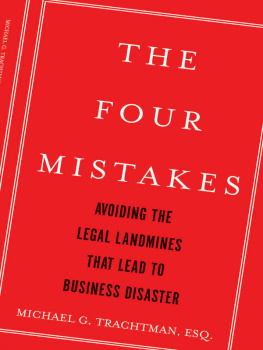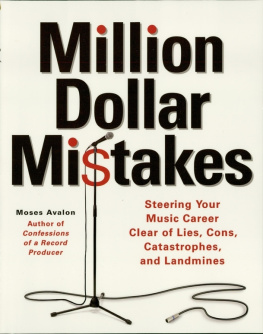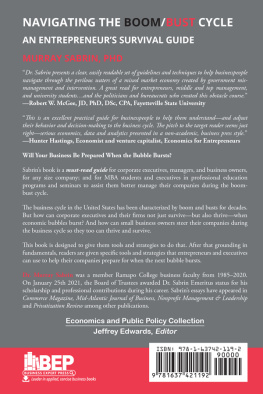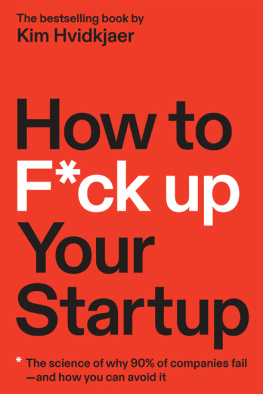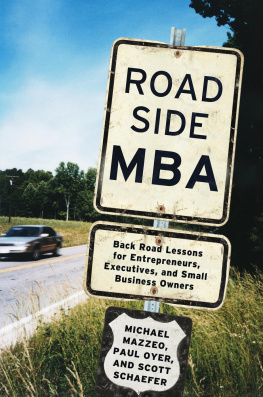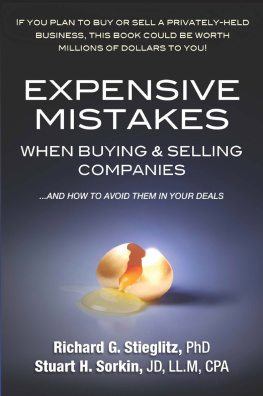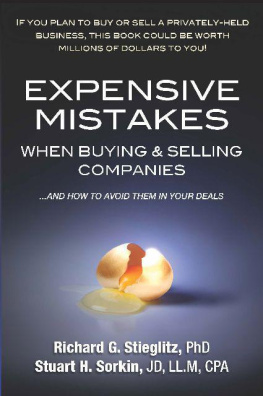THE
FOUR
MISTAKES
AVOIDING THE
LEGAL LANDMINES
THAT LEAD TO
BUSINESS DISASTER
MICHAEL G. TRACHTMAN, ESQ.

STERLING and the distinctive Sterling logo are registered trademarks
of Sterling Publishing Co., Inc.
Library of Congress Cataloging-in-Publication Data
Trachtman, Michael G.
The four mistakes : avoiding the legal landmines that lead to business disaster / Michael G. Trachtman.
p. cm.
ISBN 978-1-4027-6817-0
1. Business law--United States. 2. Business enterprises--Law and legislation--United States--Popular works. I. Title.
KF889.85.T73 2010
346.7307--dc22
2009040773
2 4 6 8 10 9 7 5 3 1
Published by Sterling Publishing Co., Inc.
387 Park Avenue South, New York, NY 10016
2010 by Michael G. Trachtman
Distributed in Canada by Sterling Publishing
c/o Canadian Manda Group, 165 Dufferin Street
Toronto, Ontario, Canada M6K 3H6
Distributed in the United Kingdom by GMC Distribution Services
Castle Place, 166 High Street, Lewes, East Sussex, England BN7 1XU
Distributed in Australia by Capricorn Link (Australia) Pty. Ltd.
P.O. Box 704, Windsor, NSW 2756, Australia
Manufactured in the United States of America
All rights reserved
Sterling ISBN 978-1-4027-6817-0
For information about custom editions, special sales, premium and
corporate purchases, please contact Sterling Special Sales
Department at 800-805-5489 or .
To Jen. She knows why.
Contents
A brief word about style... After consulting a variety of style manuals, and after struggling with the use of he or she, him or her, and other ways to achieve gender neutrality, I opted for the simplistic and traditional use of he, his, and him when referring to no one in particularas in, The ADA defines a qualified employee as one who can perform the essential functions of his job, or A nondisclosure/nonuse agreement with these provisions can prevent him from taking important data to a competitor. I did this purely to minimize textual awkwardness, and I hope that nothing other than a preference for simpler sentences will be read into my stylistic choices.
THE
FOUR
MISTAKES
I Was Doing Great.
How Could This Happen?
THIS BOOK IS FOR BUSINESS OWNERS, EXECUTIVES, AND MANAGERS who want to protect their companies, their careers, and their futures from one of the most insidious and misunderstood risks there isthe law.
Your competitions unmanaged risks are your opportunities, and this book will provide substantial advantages for business owners, executives, and managers seeking a competitive edge. Much of the information and strategies detailed in the following chapters can be utilized not only as a shield, but also as a sword.
Business is, in substantial part, the art of foreseeing and managing risk. To most businesspeople, however, the risks posed by our laws and legal system are largely unknown and seemingly unknowable. The upshot is that, much too frequently, these kinds of risks remain back-burnered and unresolved, until its too late and a costly and embarrassing lawsuit or legal setback hits the fan. Thenafter the attorneys fees, the wasted time, the insurance complications, the upset and distraction, the financial losses, the lost opportunities, the adverse publicitythe ugly, frustrating truth emerges: had those in charge known just a bit more about the laws mysterious (and sometimes arbitrary) requirements, all the tribulations could have been easily avoided.
For more than thirty years, Ive spent my professional life getting businesses out of legal trouble and training the people who run them in the art of staying out of legal trouble. Heres what Ive learned: although, as the maxim goes, ignorance of the law is no excuse, maybe it should be. I hear the same thing all the time. The law says what? That makes no sense. How was I supposed to know about that? Business owners, executives, and managers feel trapped in a world where, almost inevitably, they or someone who works for them will unwittingly run afoul of the law, for which an unholy price will be paid. In so many crucial aspects, business has become a game governed by a rule book the players cant understand.
This fact of business life can have disastrous consequences. The popular media routinely report on the seemingly fit and healthy athlete or celebrity who suffers a premature death because of a lurking, undetected condition. If only he had undergone a simple test and taken the appropriate medication, the television doctors tell us, this never would have happened. Thanks to the laws traps and pitfalls, the same thing happens, all too often, to seemingly fit and healthy businesses. Many of them function with camouflaged legal risk factors that, when triggered, cause unforeseen and overwhelming, yet fully avoidable, losses.
Ive seen too many businesses and businesspeople get blindsided. Ive seen enough of the hardships unmanaged legal risks can inflict. This book represents my effort to practice preventive legal medicine.
There is, of course, no one-size-fits-all fix, but there are clearly discernible links between certain actions and inactions and certain results, and these links teach us the fundamental axioms that apply to virtually all businesses. To continue the medical analogy, through experience and study, doctors now know the links between, for example, certain lifestyle choices and heart disease and cancer. From these links, the fundamental axioms of a healthier, more preventive lifestyle can be gleaned. The same is true in business. Lawyers who spend their careers getting businesses out of trouble learn what gets them into trouble. Lawyers who train executives and managers to stay out of trouble learn which business solutions work on paper and which work in the real world. Patterns and associations surface.
This book is about the prime offenders, what I call the Four Mistakesthe law-related actions and oversights that cause the most damage most frequently and that point the way toward business solutions that make the law an ally, not an enemy. These Four Mistakes hold a convenient truth: many successful businesses suffer the same problems for the same reasons and can utilize the same preventive measures to keep history from repeating itself.
Owners and operators of small and medium-sized businesses will recognize the Four Mistakes as involving the issues and worries they confront on a daily basis and, often, in the middle of the night. So will executives and managers who work in larger or publicly held companiesthose responsible for top-level management, as well as those responsible for individual departments or teams within the larger organization, are burdened by these same problems. The Four Mistakes are, unfortunately, universal and scalable.
You cant avoid a risk unless you know its there. The first purpose of this book is to provide business executives and managers the knowledge that is powerthe knowledge to understand and then evade a widely misapprehended battery of potentially devastating business risks that can, before you know it, turn your successes into failures.
The other side to that coin is this: Business executives and managers who do understand the Four Mistakes will learn how to take advantage of those who dont. For instance, youll learn that one of the Four Mistakes involves the failure to effectively secure top employees from the reach of competitors. Having learned how to avoid making this mistake, youll be equipped to recognize and capitalize on your competitions failure to implement the required safeguardsyoull be able to add to your talent pool while depleting theirs. The same is true with respect to many of the other topics that follow, such as boxing your adversaries in through e-mail documentation techniques, and learning how to include subtle deal terms that will give you the ability to negotiate from strength if things go awry. The Four Mistakes are, in this sense, the four opportunities.

